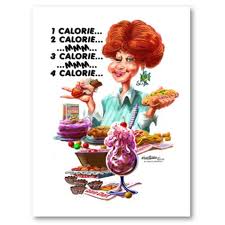7
Apr 11
This is one of the most common questions I get asked by clients in their quest to get into their best shape. There is no ‘one size fits all’ answer. Even clients that are of similar weight and height will have different caloric requirements. While it’s not rocket science, figuring out your caloric needs does take a bit of know-how and math. Proper nutrition is essential for optimum health and athletic performance, and even more imperative if your goal is to look great in your blue jeans.
To begin, everyone needs to identify their goal. Do you want to lose a few inches around your mid-section? Is your desire to add lean mass to your frame? What ever your goals, the following info will be helpful.
First you will need to determine your BASAL METABOLIC RATE or BMR. Your BMR is the number of calories your body needs to maintain your current weight while it performs basic functions, including circulating blood, digesting food and breathing. A ballpark number can be established using the following formula:
Female BMR = 655 + (4.35 x weight in pounds) + (4.7 x height in inches) – (4.7 x age in years)
Male BMR = 66 + (6.23 x weight in pounds) + (12.7 x height in inches) – (6.8 x age in years)
For example, if you are a 35 year old, five foot five, 150 lb woman, your BMR would be 1448 calories a day. This is the approximate number of calories that this woman would need to consume just to perform basic functions while maintaining her current weight.
Next, you can use the Harris Benedict Formula to determine your daily caloric needs. This is a formula that uses your BMR and applies an activity factor to determine your total energy expenditure or calories. For those individuals that fit into the general population, the formula will be quite accurate. However, the formula will probably underestimate caloric needs for very lean people, and overestimate calories for the obese. It should also be noted that a factor omitted by the Harris Benedict Formula is the amount of lean body mass a person has. Lean mass or muscle tissue increases metabolism. Therefore, more muscular bodies generally have higher caloric demands.
To determine your total daily calorie needs, multiply your BMR by the appropriate activity factor, as follows:
- If you are sedentary (little or no exercise) : Calorie-Calculation = BMR x 1.2
- If you are lightly active (light exercise/sports 1-3 days/week) : Calorie-Calculation = BMR x 1.375
- If you are moderately active (moderate exercise/sports 3-5 days/week) : Calorie-Calculation = BMR x 1.55
- If you are very active (hard exercise/sports 6-7 days a week) : Calorie-Calculation = BMR x 1.725
- If you are extremely active (very hard exercise/sports & physical job): Calorie-Calculation = BMR x 1.9
 (I hope this isn’t you…def level 1)
(I hope this isn’t you…def level 1)
In order to lose weight, there needs to be a calorie deficit. There is approximately 3500 calories in a pound of stored body fat. So, if you create a 3500-calorie deficit through diet, exercise or a combination of both, you will lose one pound of body weight. A safety guide set out by the American College of Sports Medicine (ACSM) recommends that caloric intake never drops below 1200 calories per day for women or 1800 calories per day for men. These low calorie levels, for extended periods, can be dangerous to your health. A safe way to calculate caloric intake for weight reduction is to reduce calories by 15-20% below your calculated daily calorie maintenance needs. You may increase or decrease this slightly, depending on your weight loss goals.
Maintaining body weight is an ongoing process for the majority of people. Learning as much as possible about what your body needs will make that process a little bit easier. Knowledge is power and this power may also increase your will power, helping you to make the right choices to achieve your goals for a healthy, attractive body.





 My passion is teaching people how to work fitness into their daily lifestyle in order to improve their quality of life. Let’s work together to help you reach your fitness goals!
My passion is teaching people how to work fitness into their daily lifestyle in order to improve their quality of life. Let’s work together to help you reach your fitness goals!